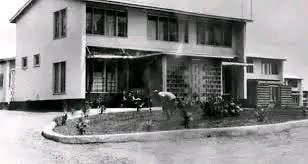Bodija Housing Estate; THE First Housing Estate in Nigeria.
The Bodija Housing Estate in Ibadan, constructed in 1959, is Nigeria’s first housing estate. All the houses in the Estate had all the basic amenities: light, water, garden, and gardens. The only difference in the houses were the architectural designs, the materials used, and the number of rooms in each structure.
Most of the houses in the area were then occupied by white-collar workers and professionals. Recently it was divided into Old and New Bodija, housing hotels, lounges, restaurants, shopping malls, and modern houses. It remains Nigeria’s first housing estate.
Three Historical Buildings In Nigeria
-1). The First-Storey Building in Nigeria
The construction of the first-storey building in Nigeria started in 1842 and was completed in 1845. After completion, Bishop Samuel Ajayi Crowther lived there with his family, and it was here that he translated the English Bible into the language.
This building is home to many historical relics, such as:
The first cemented well in Nigeria. The first primary school in Nigeria. Nigeria’s oldest Bible, written in an indigenous language. It is estimated that at least 2000 people visit every year.
-2). Jaekel House
Jaekel House was constructed in 1898 and is one of the oldest buildings within the Nigerian Railway Compound Lagos. It is named after Francis Jaekel OBE, a former superintendent of the Nigerian Railway Corporation.
The house is now managed and maintained by Legacy1995 to preserve the legacy of Nigeria’s earliest railway tracks, repair yards, and sheds. Today it houses a mini museum housing artefacts and mementos showcasing Nigeria’s railway history.
Visitors to the Jaekel House Museum can see British weaponry, miniature reproductions of trains, and other artefacts and photographs linked to the period’s civilian, political, and military life.
-3). Ancient Kano City Walls
Kano, now one of the most populated cities in West Africa, was surrounded by the ancient Kano city walls hundreds of years before British colonists arrived in Nigeria.
The brown-mud wall stands thirty to fifty feet high and measures 40 feet thick and was constructed between 1095 and 1134 and completed in the middle of the 14th century.
The city of Kano was a center for Islamic studies and a thriving hub with abundant water and iron deposits at the time, so the leadership took extra security precautions by using the ancient Kano city walls to monitor all entry and exit and protect the city from outside invasion.
Source: Dutumgroup













 Share on WhatsApp
Share on WhatsApp
 Share on Twitter
Share on Twitter
 Share on Facebook
Share on Facebook












